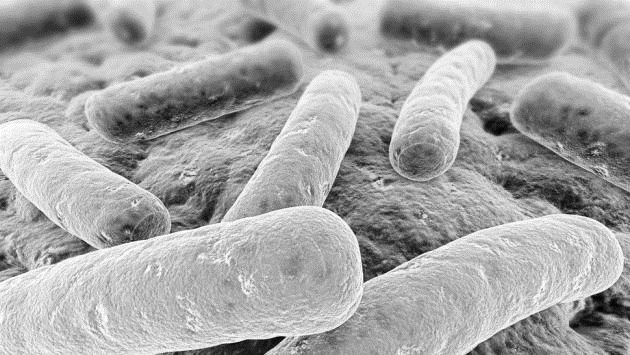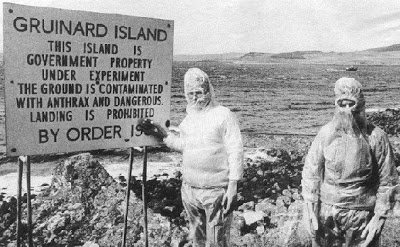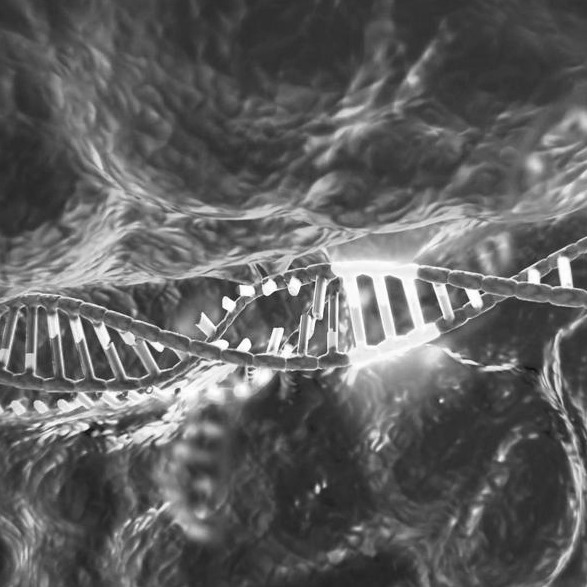Biological warfare is the destruction or incapacitation of humans, plants or animals as an act of war with the use of biological toxins or infectious diseases such as viruses, bacteria or fungi.1 This type of warfare is distinct from nuclear or chemical warfare, the two other types of Weapons of Mass Destruction (WMDs), in that the agents used originate from living organisms or replicating entities and are much slower acting but are equally lethal, if not more so than nuclear or chemical. Chemical weapons, such as sarin or soman most often lead to injury, whereas biological weapons have the potential to produce massive fatalities, possibly even worldwide pandemics.5
Biological weapons can be dispersed in the way of transmission from person to person or in the form of an aerosol, however their use and large scale production is banned by the 1972 Biological Weapons Convention which was signed by 170 countries with the aim of preventing catastrophic civilian casualties.2
One type of biological weapon is anthrax, an infectious disease caused by Bacillus anthracis (Figure 1) which is spread in the form of minute spores and can enter the body via the airways or broken skin.3 The result of becoming infected with anthrax spores can be delayed for days or weeks but eventually the spores turn into active bacteria and small blisters form on the areas in contact with the spores. If these blisters form on the skin then the disease is relatively harmless and is unlikely to lead to death, however if they form in the lungs then the victim will find difficulties in breathing and the bacteria will enter the bloodstream. Once the bacteria are in the bloodstream it can reach the lymph nodes where it produces three proteins which lead to haemorrhaging and swelling and ultimately death. The three different proteins produced are a protective antigen, edema factor and lethal factor; the combined effects on the body of these three proteins makes up the anthrax toxin which in turn leads to cell death and death of the host organism.5

Figure 1: Electron Micrograph of B. Anthracis. 4
The reason anthrax has great potential as a biological weapon is that in the form of an aerosol (with particle sizes ranging from 1.5 to 5µm) it has no colour, taste or smell and, as symptoms of infection can potentially take weeks to appear, large populations of organisms could be infected without detection.6 Anthrax can be spread in an aerosol as the spores they form are resistant to heat and abrasion and so can remain dormant on infected land for decades. This was the problem that emerged for British scientists from Porton Down in 1942 who tested the effects of anthrax as a biological weapon on Gruinard Island, Scotland, using sheep as test subjects. The island was quarantined for 50 years (figure 2) until it was decontaminated in 1990.7

Figure 2: Hazardous Material Team on Guinard Island. 7
At the time, formaldehyde diluted in seawater was used as a decontaminant. However, it has since been discovered that a spray containing chlorine dioxide, catalysed by sodium carbonate and sodium bicarbonate with zinc and tetroamido ligands, followed by a spray containing tert-butyl hydroperoxide is a more effective biocide.8
The only recorded incident of the deliberate use of anthrax as a part of warfare or terrorism was in the US in 2001 when two Democratic senators and multiple news media offices received letters containing spores of anthrax. In total, 22 people were infected and of these five died. It was believed that this attack was linked to the 9/11 attack as the letters were posted just over a week later (18th September) and contained messages saying “Death to America” (Figure 3).9

Figure 3: Letter laced with anthrax spores sent to Senator Leahy. 9
Another example of a biological weapon is ricin; this is a deadly poison that is extracted from the waste product of castor oil and can take the form of a powder, aerosol, pellet, or can be dissolved in dilute acid or water. This means that ricin can be ingested, inhaled or injected into the body to cause harm or death.10 Once this toxin enters the body, it begins to break down ribosomes (organelles which synthesise proteins by assembling amino acids) and so important proteins required to keep the cell alive are not produced, leading to cell death. Ricin attacks the cells of vital gastrointestinal organs, leading to kidney, liver and pancreas failure. This results in abdominal pain, diarrhoea and vomiting followed by death a few days after the poison enters the body.11
Ricin has been weaponised since the First World War in the form of a toxic dust or bullet coating and has been prepared to be used in several wars including WWII and the Cold War but has never been used large scale. The most famous use of ricin was the assassination of BBC journalist and broadcaster Georgi Markov by the Bulgarian secret police with the help of the Russian KGB during the Cold War due to his comments about the Bulgarian Stalinist regime.12 Markov was shot in the leg by a modified umbrella with a wax-coated capsule containing ricin and died three days later after experiencing a fever and severe sickness.13

Figure 4: Seeds of a castor plant from which castor oil and ricin can be extracted. 11
This biological agent could prove to be very effective in the way of a biological weapon because, unlike anthrax, it does not survive for more than a couple days in the open and is also not contagious so once it has infected those targeted via the air, food supply or injection, it poses even less of a threat to the user than anthrax. It is also inexpensive as it comes from a waste product and is very simple to weaponize compared to chemical or nuclear agents.10
The potential impact of biological weapons in warfare is unbounded. If a weaponised Ebola or smallpox bomb was used it could lead to millions of deaths worldwide which is why it is so imperative for scientists to work with these chemicals to find vaccines and cures at the same rate as new methods of biological warfare are emerging. One such future advancement in biological weaponry is genetic warfare, named a ‘plausible possibility’, whereby biological agents could be modified to render existing cures and vaccines useless. With a greater understanding and public accessibility of research in to genetic engineering happening every day sparks the potential for such weapons to one day be a reality.14 This makes it more important than ever for scientists to keep one step ahead of individuals or violent groups who may make these weapons.
Written By Georgia Rowe
References:
[1] “What are Biological and Toxic Weapons?” UNOG The United Nations Office at Geneva. [Online] Available:http://www.unog.ch/80256EE600585943/(httpPages)/29B727532FECBE96C12571860035A6DB?OpenDocument
[2] “Biological Weapons,” UNODA United Nations Office for Disarmament Affairs. [Online] Available: https://www.un.org/disarmament/wmd/bio/
[3] “Anthrax” CDC Centers for Disease and Prevention, Jan. 31, 2017. [Online] Available: https://www.cdc.gov/anthrax/index.html
[4] “Anthrax Infographic,” Venngage. [Online] Available: https://infograph.venngage.com/p/87089/anthrax-infographic
[5] R. P. Hicks, M. G. Hartell, D. A. Nichols, A. K. Bhattacharjee, J. E. van Hamont and D.R. Skillman, “The Medicinal Chemistry of Botulinum, Ricin and Anthrax Toxins,” Current Medicinal Chemistry, vol. 12, no. 6, pp. 667-690, Dec. 2005.
[6] E. Palermo, “What is Anthrax?” Live Science, Jun. 26, 2013. [Online] Available: http://www.livescience.com/37755-what-is-anthrax-bioterrorism.html
[7] “Gruinard Island,” Atlas Obscura. [Online] Available: http://www.atlasobscura.com/places/gruinard-island
[8] V. K. Rastogi, S. P. Ryan, L. Wallance, L. S. Smith, S. S. Shah, G. Blair Martin, “Systematic Evaluation of the Efficacy of Chlorine Dioxide in Decontamination of Building Interior Surfaces Contaminated with Anthrax Spores,” Applied and Environmental Microbiology, vol. 76, no. 10, pp. 3343-3351, May 2010. [Online] Available: http://aem.asm.org/content/76/10/3343.full.pdf
[9] “Amerithrax or Anthrax investigation,” US Department of Justice: FBI. [Online] Available: https://www.fbi.gov/history/famous-cases/amerithrax-or-anthrax-investigation
[10] “Weapons of Mass Destruction: Ricin,” Global Security. [Online] Available: http://www.globalsecurity.org/wmd/intro/bio_ricin.htm
[11] D. Nosowitz, “Everything You Need to Know About Ricin,” Popular Science, Apr. 17, 2013. [Online] Available: http://www.popsci.com/science/article/2013-04/everything-you-need-know-about-ricin-poison-sent-us-senator#page-2
[12] J. Emsley, “Molecules of Murder: Criminal Molecules and Classic Cases: Georgi Markov,” Cambridge: Royal Society of Chemistry, 2008. [Online] Available: http://aboutforensics.co.uk/georgi-markov/
[13] “Cold War Assassination: The Umbrella Murder of Georgi Markov,” MurderMap. [Online] Available: http://www.murdermap.co.uk/pages/cases/case.asp?CID=490612156
[14] J. van Aken and E. Hammond, “Genetic Engineering and Biological Weapons,” EMBO Reports, vol. 4, no.1, Jun. 2003. [Online] Available: https://www.ncbi.nlm.nih.gov/pmc/articles/PMC1326447/

Very interesting!
LikeLike
A very interesting story with some alarm facts about how chemicals can be used in a bad way. So we must always look towards creating antidotes
LikeLike
Great blog… Very informative.
Especially the biological warfare section; the amount of times its been used really struck me.
LikeLike